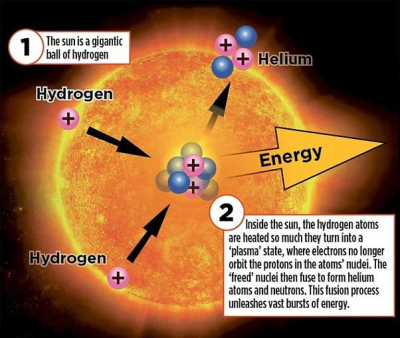Stars like our Sun radiate huge quantities of energy because of the nuclear fusion reaction taking place inside their core. Can we use the same idea to generate power that is clean and cheap? Where are scientists around the world working on such projects.
The energy scenario in the world is changing as natural sources conventionally used for generating energy like fossil fuels, oil and coal are fast depleting.
But there are abundant energy sources that cause minimal climate change. Nuclear energy is one such option being used worldwide. In this process, energy is released from the nucleus of an atom either by splitting the heavy atom into two (nuclear fission) or by combining two light atoms into a heavier one (nuclear fusion).
For more than 50 years, energy has been generated in nuclear power plants through fission, a process in which heavy elements such as uranium are bombarded by neutrons, resulting in the splitting of the nuclei and the release of huge amounts of energy in the form of heat.
Nuclear fusion is the opposite process. In fusion reactors, light atomic nuclei are compressed under intense pressure and heat, forcing them to combine together to form heavier nuclei. Fusion also results in the release of huge quantities of energy.
Special conditions Normally, atomic nuclei repel each other if we try to bring them closer; to force them to come close and ultimately fuse together, special conditions have to be generated in the form of very high pressure and extremely high temperatures.
Stars like our Sun radiate huge quantities of energy because of the nuclear fusion reaction taking place inside their core- hydrogen is continuously changing to helium.
The core experiences extremely high pressure because of the gravitational force exerted by the mass of the gigantic star itself, this pressure also leads to the generation of very high temperature inside the star. So, the basic requirement for a fusion reaction is to create a star-like situation inside the reactor in terms of temperature and pressure. To generate such conditions, a lot of energy is needed.
The process must be optimised to generate more energy than it consumes. Fusion could be utilised to generate electricity commercially. The main fuels used in nuclear fusion are deuterium and tritium, both heavy isotopes of hydrogen. Deuterium constitutes a tiny fraction of natural hydrogen, only 0.0153 per cent, and can be extracted inexpensively from seawater. The amount of deuterium present in one litre of water can in theory produce as much energy as the combustion of 300 litres of oil! This means that there is enough deuterium in the oceans to meet human energy needs for millions of years.
Building a fusion power plant that can withstand the immense temperature and pressures produced by this process is one of the century’s greatest engineering challenges. The fuel must be heated to about 100 million degrees Celsius. At that hotter-than-the-sun temperature, a fully ionised gas-plasma is formed. The plasma will then be ignited to create fusion.
Picture Credit: Google





